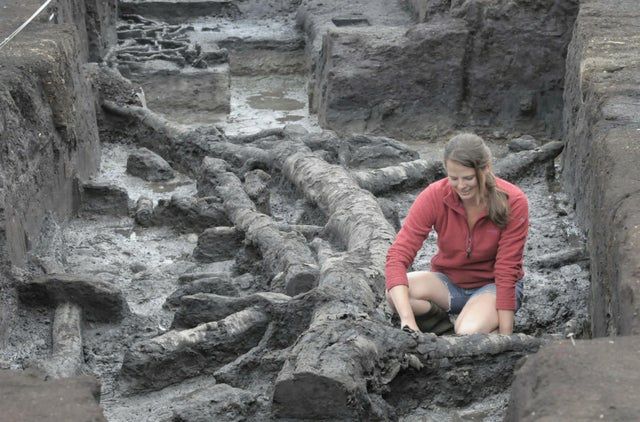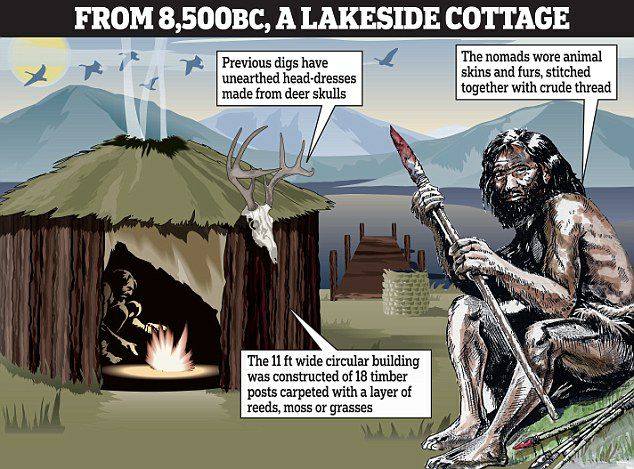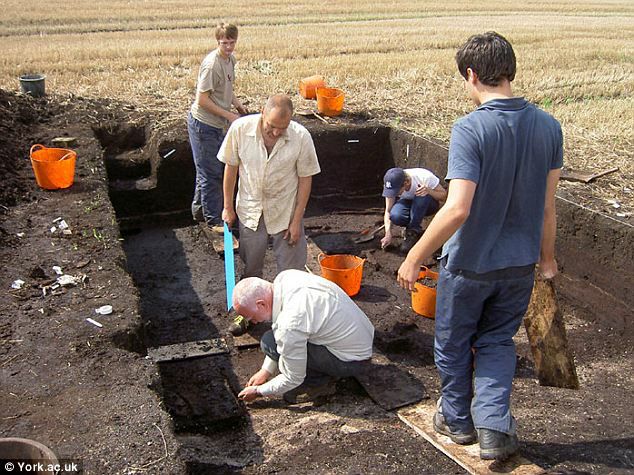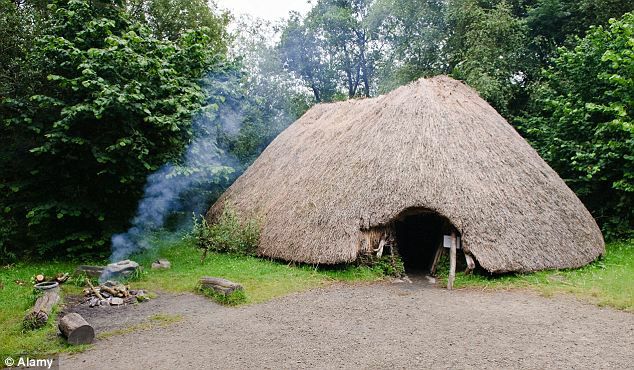Small, bulky, and devoid of architectural glamour, this wooden hut holds significant importance as one of the most remarkable structures ever designed in Britain, according to archaeologists.

As illustrated by our artist, this recently discovered circular structure is the oldest known dwelling in the country. Constructed over 6,000 years before the iconic Stonehenge, it provided refuge from the harsh icy winds and storms that battered the nomadic hunters traversing Britain during the final stages of the last ice age.
The remains of this 11-foot-wide building, unearthed near Scarborough in North Yorkshire, have been dated back to at least 8,500 BC. Situated beside an ancient lake and in proximity to the remnants of a wooden quayside, it reveals intriguing insights into ancient settlements.

Dr. Chantal Conneller from the University of Manchester explains that this structure predates the previous record-holder, a building discovered in Howick, Northumberland, by approximately 500 to 1,000 years. She states, “This challenges our understanding of the lives of the first settlers who returned to Britain after the end of the last ice age. We used to believe they were highly mobile and left minimal evidence. Now we know they constructed substantial structures and formed deep attachments to specific locations in the landscape.”
No traces of the original wood used in the hut’s construction have survived. Instead, archaeologists found distinct signs of 18 timber posts arranged in a circular pattern. The central area of the structure had been excavated and filled with organic materials.

The researchers speculate that the floor may have been covered with a layer of reeds, moss, or grass, and possibly featured a fireplace. Dr. Conneller suggests that the hut was inhabited for a span of 200 to 500 years, with intermittent periods of abandonment.
“We have limited knowledge about its purpose,” she adds. “It could have served as a dwelling, although it could only accommodate three or four people. Alternatively, it might have held ritual significance, given the evidence of ritual activities at the site.”

Previous archaeological excavations near the hut have uncovered deer skull head-dresses, flint remnants, a boat paddle, antler tools, fish hooks, and beads.
The researchers also discovered a large wooden platform adjacent to the ancient, now-vanished Star Carr lake. This platform, made from split and hewn timbers, is the earliest known evidence of carpentry in Europe. During that time, Britain was connected to the rest of Europe, and the hut’s occupants were nomadic hunters who migrated from an area that now lies beneath the North Sea. They hunted deer, wild boar, elk, and wild cattle.

Dr. Nicky Milner from the University of York expresses excitement about this extraordinary finding, stating, “This discovery provides us with valuable insights into the lives of people from that era. From this excavation, we can vividly picture how these individuals lived. It appears that the house may have been rebuilt at different stages, suggesting the likelihood of multiple houses and a significant population. The intriguing presence of antler artifacts, particularly the antler headdresses, suggests ritual activities.”
While hunter-gatherers had been visiting Britain for hundreds of thousands of years, it was only after the glaciers receded from Scotland at the end of the last ice age that the country became permanently inhabited.
Thousands of miles away, in the Mesopotamian “Fertile Crescent,” the earliest farmers were learning the art of agriculture and animal domestication, ushering in a transformative era marked by the advent of villages, writing, and civilization. In contrast, the hunter-gatherer lifestyle that had sustained prehistoric humans in northern Europe remained unchallenged.





